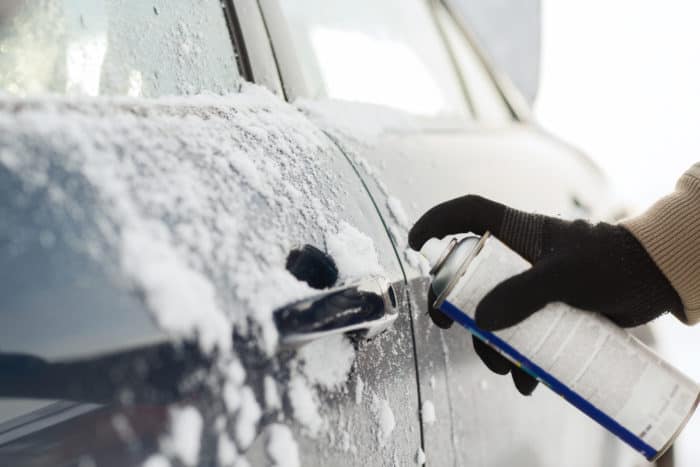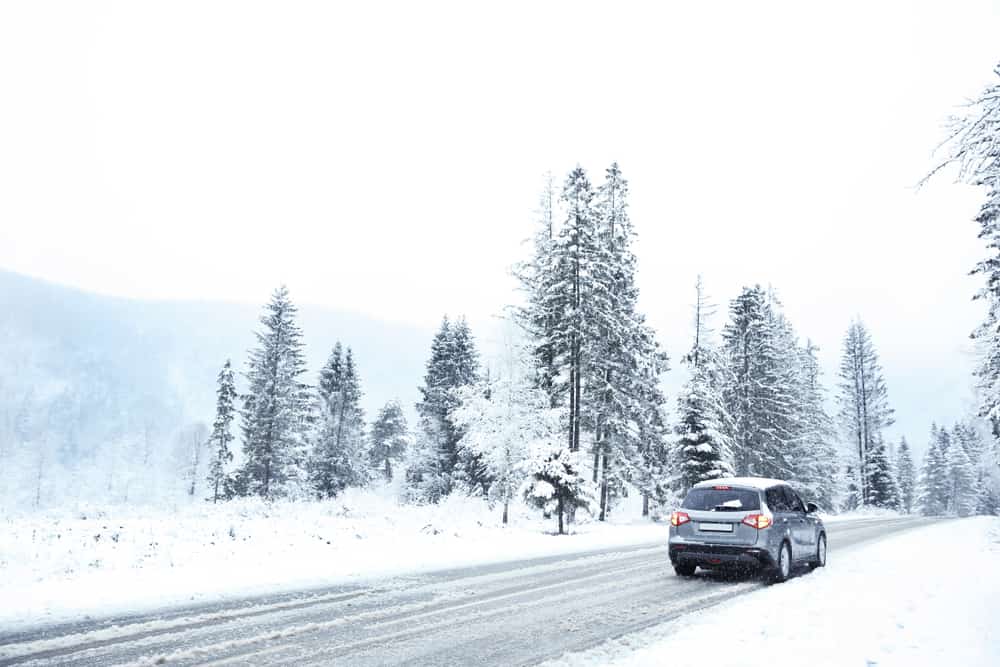Here are three easy methods for how to open a frozen car door quickly. Hint: None of them involves using a hammer.
You head to your car, ready to start your day, only to realize all your doors are frozen shut from ice or snow. If you live in a cold climate and can’t park in a garage, frozen car doors are inevitable. Luckily, there are a few methods to open a frozen car door.
The techniques we describe here involve dissolving ice. Typically, layers of ice form in the space between the car door and the body of a vehicle. Along with that, the actual handle or lock can freeze. Fortunately, there are tricks to unfreeze all the commonly stuck areas of your car door. The FAQ at the bottom of this article answers common questions as well as outlines some prevention tips.
If you’re an early bird by choice or by necessity, you can’t just wait until the sun decides to shine through the clouds. After extensive research, we’ve concluded that multiple approaches are equally effective.
Whether you’re reading this right now because your door is stuck, or you want to keep these tips in the memory bank, save our tips and tricks where you can find them again later.
3 Ways to Open a Frozen Car Door

Before attempting any of these, without being too rough, try and break up the ice by applying pressure to the door. Doing so may cause the ice to fall off or crack enough for the door to open. If you have a car you can start remotely, try starting the car and waiting around 20 minutes if you have the time.
After that, if it still won’t budge, use one of these methods below to open up that frozen car door in no time.
Method 1: Warm Water
What you’ll need:
- A pitcher, bucket, or cup
- Warm water
- Towel
First and foremost, when we say “warm water,” we mean warm water. Do not use boiling water! It could cause significant damage to your vehicle, including shattering your window.
Fill a pitcher with warm water and pour it over the frozen door, door lock, or door frame. Next, pour warm water around the seal of the door and the handle. Tip the water slowly and sparingly, as you may need to repeat the process depending on how much ice is on your door.
Once the ice melts fully, open the door and dry the area with a towel to prevent it from freezing again. After drying, you should be able to open the door.
Method 2: Ice Scraper
- Plastic ice scraper
- Elbow grease (mixed with gentleness)
Method 3: De-Icing Spray or Other Lubricant
- De-icing spray, rubbing alcohol, or Vaseline
Now You Know How to Open a Frozen Car Door
FAQ
How Do I Prevent Frozen Car Doors?
In most cases, this will prevent you from even needing to use the above methods to open a frozen car door.
Some other preventative measures:
- Place a trash bag between the frame and door so they’re unable to freeze together
- Apply a rubber conditioner over the rubber seals (around the door) as a protectant
- Put Vaseline on the door frame and door seal before it’s frozen
- If applicable, replace any damaged gaskets
Does Rubbing Alcohol Unfreeze Car Doors?
Can I Unfreeze My Car With Vinegar?
If you’re in a bind, and it’s for some reason your only option — yes. Vinegar can be used as a de-icer, as described in method 3. With that, vinegar leaves a nasty lingering smell and can potentially leave marks.
How Do You Open a Frozen Car Door Lock?
Hopefully this goes without saying, but be extra careful when dealing with boiling water or an open flame. To prevent your car door lock from freezing in the first place, you can put vaseline on your key and then insert it into the lock.













